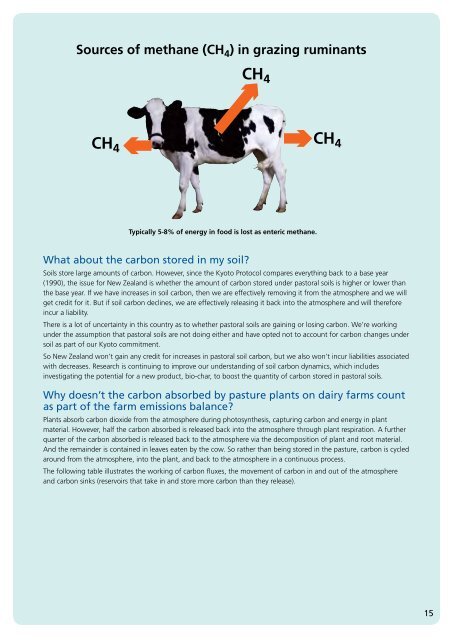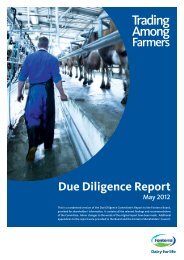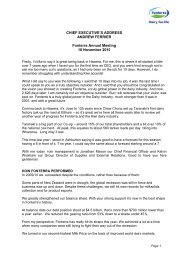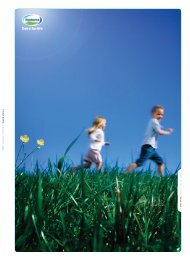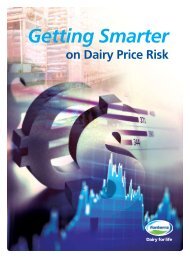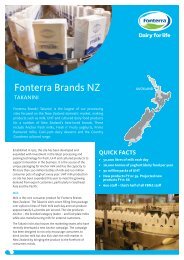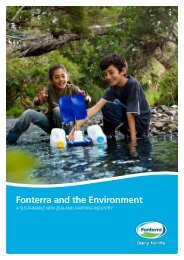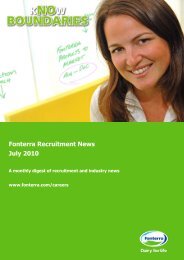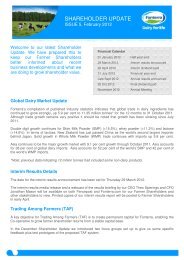A Fonterra Guide to Climate Change
A Fonterra Guide to Climate Change
A Fonterra Guide to Climate Change
- No tags were found...
You also want an ePaper? Increase the reach of your titles
YUMPU automatically turns print PDFs into web optimized ePapers that Google loves.
sources of methane (Ch 4 ) in grazing ruminantsCh 4Ch 4Ch 4typically 5-8% of energy in food is lost as enteric methane.What about the carbon s<strong>to</strong>red in my soil?Soils s<strong>to</strong>re large amounts of carbon. However, since the Kyo<strong>to</strong> Pro<strong>to</strong>col compares everything back <strong>to</strong> a base year(1990), the issue for New Zealand is whether the amount of carbon s<strong>to</strong>red under pas<strong>to</strong>ral soils is higher or lower thanthe base year. If we have increases in soil carbon, then we are effectively removing it from the atmosphere and we willget credit for it. But if soil carbon declines, we are effectively releasing it back in<strong>to</strong> the atmosphere and will thereforeincur a liability.There is a lot of uncertainty in this country as <strong>to</strong> whether pas<strong>to</strong>ral soils are gaining or losing carbon. We’re workingunder the assumption that pas<strong>to</strong>ral soils are not doing either and have opted not <strong>to</strong> account for carbon changes undersoil as part of our Kyo<strong>to</strong> commitment.So New Zealand won’t gain any credit for increases in pas<strong>to</strong>ral soil carbon, but we also won’t incur liabilities associatedwith decreases. Research is continuing <strong>to</strong> improve our understanding of soil carbon dynamics, which includesinvestigating the potential for a new product, bio-char, <strong>to</strong> boost the quantity of carbon s<strong>to</strong>red in pas<strong>to</strong>ral soils.Why doesn’t the carbon absorbed by pasture plants on dairy farms countas part of the farm emissions balance?Plants absorb carbon dioxide from the atmosphere during pho<strong>to</strong>synthesis, capturing carbon and energy in plantmaterial. However, half the carbon absorbed is released back in<strong>to</strong> the atmosphere through plant respiration. A furtherquarter of the carbon absorbed is released back <strong>to</strong> the atmosphere via the decomposition of plant and root material.And the remainder is contained in leaves eaten by the cow. So rather than being s<strong>to</strong>red in the pasture, carbon is cycledaround from the atmosphere, in<strong>to</strong> the plant, and back <strong>to</strong> the atmosphere in a continuous process.The following table illustrates the working of carbon fluxes, the movement of carbon in and out of the atmosphereand carbon sinks (reservoirs that take in and s<strong>to</strong>re more carbon than they release).15


